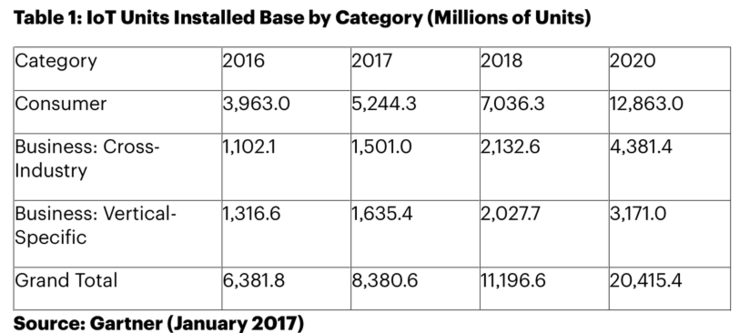In Part 1 of our series on data provenance, we explored the alternative data marketplace, defined its critical differences from traditional data sources, and discussed what it means to transform those streams into Asset Grade Data (AGD). As a reminder, AGD is data that is so pedigreed, provenanced, proofed, auditable, and immutable that it becomes beyond reproach. Any investor is comfortable trusting the insights derived from AGD to make significant financial, operational, or capital expenses based on it. A rigorous security approach and the right tools elevate that data to the level of an asset itself. Those derived insights, in turn, become Asset Grade Analytics (AGA). With billions of dollars in investment funds dedicated to sourcing these data streams, it is necessary to ensure they become assets.
In Part 2, we will explore the concept of Ground Truth, the origin of those sources of data, and how to best use that data to derive the most granular insights possible. The Immutably™ for Asset Grade Data platform and the team at Context Labs (CXL) and Spherical | Analytics (S|A) can capture this data, transform it into AGD, and feed those trusted sources into your models and analytics.
The implications and uses of alternative data, AGD, and Ground Truth extend far beyond that of traditional investing and new data streams for investment evaluation decisions. Many other stakeholders or decision makers from numerous industries and environments trust alternative data to make critical decisions. Many of these decisions would not have even been possible in the last decade and some operators have struggled to keep up with the inputs.
A number of reasons can describe this phenomenon. Increased digital awareness and rapidly expanding computing power have elevated data which was previously unable to be synthesized in an efficient or meaningful way. Both the Internet of Things (IoT) and the explosion of remote sensing equipment allow for near real-time insights into equipment and assets, operating environments, and other areas of interest by creating data about the assets they monitor as well as their own metadata descriptions. Recent estimates from Gartner state that 6.38 billion IoT units were installed in 2016 and estimate that over 20 billion will be installed by 2020.[1] Important to highlight: these figures encompass only new sensors intended to be installed. Billions of sensors have already been deployed into the physical world and provide source-level insights otherwise lost or unknown. The key remains capturing and applying that data securely.

Having source data of this kind that is derived directly from sensors monitoring assets delivers “Ground Truth”, or point-of-origin data with high levels of security and pedigree. IoT sensors have been deployed across numerous use cases and can come in many forms.
For example, IoT sensors can monitor, in real time or batch configuration:
- ground water presence, level, and quality
- methane emissions from oil and gas wellheads
- temperature, luminosity, and humidity readings inside a grow shelter
- equipment performance in critical urban infrastructure or a manufacturing facility
- biochemical data from air or soil quality readings
With the realities of a changing climate becoming ever more obvious, capital also continues to move in more sustainable and resilient directions. Understanding the organizational impact of climate change and quantifying the resilience needed to address it requires Ground Truth from first-hand sensor sources. Without that level of granularity, one in turn has to rely on models or analytics that do not account for lowest-level source data.
Before joining the CXL and S|A team, the ImpactLABS team worked extensively with local growers in Massachusetts to help them gain Ground Truth with IoT sensors.[2] By persistently monitoring water consumption, energy usage, and growing conditions in multiple locations across disparate sites, the ImpactLABS team provided tangible evidence of organizational efficiencies that were gained by giving clients Ground Truth data that allowed them to both reduce operating expenses and increase organizational efficiency.
That first-hand knowledge of Ground Truth sensing has given our team unique insight and understanding into not only securing and synthesizing AGD, but also the very systems and places from which the data is collected. Combined with the cryptographic proofing, ledgering, and analysis capabilities of the Immutably™ platform, our team has the ability to give you trust all the way to the edge.
The Immutably™ product family from CXL and S|A provides investors with AGD through all-source data ingestion, unique cryptographic proofing methodologies, and private, distributed blockchain ledger technology. This transformation from raw, untrusted data into synthesized and consumable AGD allows for the formation of AGA with deep visualizations and derived analytic insights.

Alternative data may be classified as non-traditional information, but these types of data sources have increasingly been elevated to the forefront of a growing number of critical investing, operating, and governing decisions. Investors and operators have to quiet the data noise and glean those trusted insights. Having Ground Truth data directly from a source sensor only serves to elevate that trust in the secure knowledge that the information being transmitted has been through a robust trust lifecycle. The Immutably™ product family from Context Labs and Spherical | Analytics accomplishes those goals with Asset Grade Data, Asset Grade Analytics, and trusted insights for nearly any use case or application.
In Part 3: Trust, we will explore those different use cases and applications for AGD and Ground Truth currently under development by the CXL and S|A teams.
If you missed Part 1 of the Data Provenance Series on Asset Grade Data, read it here.
[1] https://www.gartner.com/en/newsroom/press-releases/2017-02-07-gartner-says-8-billion-connected-things-will-be-in-use-in-2017-up-31-percent-from-2016
[2] https://iotimpactlabs.com